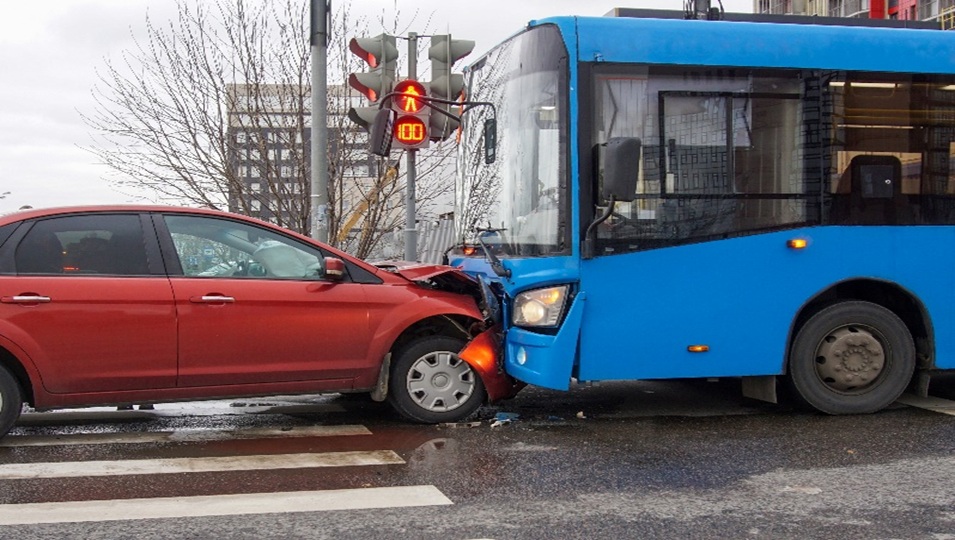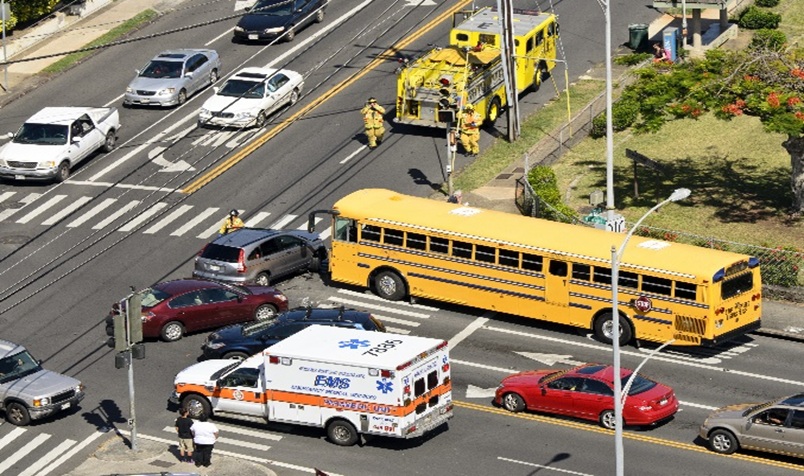Minimizing Transportation Liability Claims with Online Health and Safety Courses
Minimizing Transportation Liability Claims with Online Health and Safety Courses
Transportation-related accidents are a common occurrence in workplaces across the United States, contributing to significant financial losses, legal expenses, and even fatalities. For companies that rely on transportation for deliveries, employee travel, or distribution, minimizing liability claims should be a top priority. One of the most effective ways to reduce such claims is by investing in comprehensive health and safety training programs, particularly those focused on transportation safety.
Online health and safety courses offer an accessible, efficient, and scalable solution for businesses to equip their workforce with the knowledge and skills necessary to prevent accidents and mitigate risks. This blog will explore the critical role of safety training—specifically online safety training—such as OSHA courses, in minimizing transportation-related liability claims.
Understanding Liability Claims
A liability claim occurs when an individual or entity is held legally responsible for harm caused to another party. In the context of transportation, liability claims can arise due to accidents, injuries, or damage caused by a company’s vehicle or driver. The harm caused by these incidents can range from minor injuries to significant property damage or even fatalities.
In the workplace, liability claims often come with substantial costs, including medical expenses, property repair or replacement, compensation for lost wages, and legal fees. Additionally, businesses may suffer reputational damage and a loss of trust from their clients or customers. This-is why understanding how to prevent accidents and reduce risks through effective safety and health training is crucial.

Statistics on Liability in U.S. Workplaces
Transportation is a leading cause of workplace injuries in the U.S. According to the National Safety Council (NSC), motor vehicle crashes account for over 40% of workplace deaths annually. In fact, the NSC reports that, in 2020 alone, there were 2,122 deaths due to transportation accidents within the workplace, representing an alarming number of lives lost.
Beyond fatalities, the cost of workplace transportation-related injuries is staggering. The NSC estimates that workplace injuries, including those caused by transportation accidents, cost U.S. businesses over $170 billion annually. These figures demonstrate the urgency of implementing effective safety measures to minimize the risks associated with transportation.
Liability Laws for Traffic Injuries
When it comes to traffic-related injuries and accidents, liability laws are designed to establish who is responsible for damages. In the case of transportation-related workplace accidents, liability can fall on several parties, depending on the specifics of the incident. Common scenarios where liability claims may arise include:
- Employee driver negligence: If an employee causes an accident while operating a company vehicle, the employer may be held liable for damages under the legal doctrine of “vicarious liability.” This means that if the employee was performing job-related duties at the time of the accident, the employer may bear responsibility for the consequences.
- Vehicle maintenance negligence: If an employer fails to properly maintain their fleet of vehicles, they may be held liable for accidents caused by mechanical failure or faulty equipment.
- Third-party negligence: If another driver causes an accident with a company vehicle, that third party may be held liable for the damages, although the company may still be required to prove the negligence in court.
Understanding how liability works in traffic injuries helps employers better prepare for the potential legal consequences of an accident and provides guidance on how to minimize risks through proactive safety training and compliance.
Incorporating accident liability into crash risk analysis: A multidimensional risk source approach
https://www.sciencedirect.com/science/article/abs/pii/S000145752100066X
OSHA’s Role in Transportation Liability
The Occupational Safety and Health Administration (OSHA) plays an important role in regulating workplace safety, including safety standards for transportation. OSHA sets standards to protect workers from workplace hazards, including those that may arise while driving or working near vehicles. While OSHA does not directly govern vehicle operation or traffic laws, it does require employers to maintain safe work environments, which includes ensuring that employees are adequately trained to avoid transportation-related accidents.
OSHA standards related to transportation safety may include:
- Proper vehicle maintenance practices
- Ensuring employees are trained to safely operate vehicles and equipment
- Providing adequate safety equipment, such as seat belts and reflective vests
- Implementing risk assessment protocols to identify and address potential hazards
Employers that comply with OSHA regulations for transportation safety are more likely to minimize the risk of liability claims arising from accidents or injuries.
The Effect of Automobile Insurance and Accident Liability Laws on Traffic Fatalities
https://www.nber.org/system/files/working_papers/w9602/w9602.pdf
Who Do Liability Laws Cover?
Liability laws can cover multiple parties depending on the situation. In the case of workplace transportation accidents, liability can be assigned to the following individuals or entities:
- Employers: Companies may be liable if they fail to provide safe vehicles, proper maintenance, or-sufficient safety training. Employers can also be held responsible if the accident occurred during work hours or while the employee was performing their job duties.
- Employees: If an employee is at fault for an accident due to negligence, they may be personally liable. However, in many cases, employers will still be responsible under vicarious liability laws.
- Third Parties: In some cases, liability may fall on third parties, such as other drivers involved in the accident. These third parties could be held responsible if their actions contributed to the accident.
- Insurance Providers: Liability insurance can also play a crucial role in managing transportation-related claims. Employers are often required to carry commercial vehicle insurance that covers accidents and injuries involving company vehicles.
Affected Parties’ Rights
When a transportation-related accident occurs in the workplace, several parties may be affected, including:
- Injured employees: Employees who are injured in a workplace transportation accident are entitled to workers’ compensation benefits. Workers’ compensation generally covers medical expenses, lost wages, and rehabilitation costs, but it may not compensate for pain and suffering.
- Injured third parties: If a third party, such as another driver or pedestrian, is involved in an accident with a company vehicle, they may have the right to pursue compensation for medical bills, lost wages, and other damages.
- Employers: Employers may have the right to protect themselves from undue liability through health and safety training and legal defenses. Employers can also negotiate with insurance providers to reduce the financial burden of claims.

Employer Responsibilities
Employers have a legal obligation to protect their employees and others from harm in the workplace, including preventing transportation-related accidents. Some key responsibilities include:
- Providing safety training: Employers must provide adequate safety training programs that educate employees about safe driving practices, vehicle operation, and how to avoid common risks associated with transportation.
- Ensuring vehicle safety: Employers must ensure that their fleet of vehicles is well-maintained and complies with all necessary safety standards.
- Risk assessments: Employers must regularly assess risks related to transportation activities and take steps to address hazards, such as adverse weather conditions, traffic congestion, or mechanical failures.
- Monitoring compliance: Employers should establish monitoring systems to ensure employees adhere to safe driving practices and regulations, such as speed limits and the use of seat belts.
The Role of Online Safety Training
Online health and safety training programs offer several distinct advantages that make them particularly valuable in minimizing transportation liability claims:
- Accessibility: Online safety courses are accessible to employees across different locations and time zones, making it easier to train large and geographically dispersed teams.
- Scalability: Online safety training can be scaled to accommodate any number of employees, from a few individuals to an entire fleet of drivers.
- Cost-effectiveness: Compared to in-person safety training, online safety courses are often more affordable, eliminating the need for travel, instructors, and other logistical costs.
- Flexibility: Employees can complete online safety training at their own pace, which reduces the impact on daily operations and minimizes disruptions to business productivity.
- Up-to-date content: Online safety and health training platforms can be quickly updated to reflect changes in OSHA regulations or industry standards, ensuring that employees are always receiving the most current information.
- Consistency: Online safety courses ensure that all employees receive the same safety training, reducing the risk of inconsistency in safety practices across the workforce.
Conclusion
Minimizing transportation liability claims is essential for businesses that rely on vehicles to conduct their operations. By investing in online health and safety training programs, employers can provide their workforce with the knowledge and skills needed to prevent accidents, reduce risks, and comply with OSHA standards. Online safety courses are a convenient, scalable, and cost-effective solution that can help businesses mitigate the risks of transportation-related incidents and, ultimately, reduce the financial burden of liability claims. By prioritizing safety training and fostering a culture of safety, employers can protect their employees, reduce their exposure to legal risks, and safeguard their business’s reputation.
Author: Dr. O’Neil G. Blake, Chief Executive Officer (CEO) of OSHAccredited Safety Institute
MS., MBA., MSc., BSc, CSP., ASP., CSHM., CSMP., MRSA.
Date: 01-07-2025











